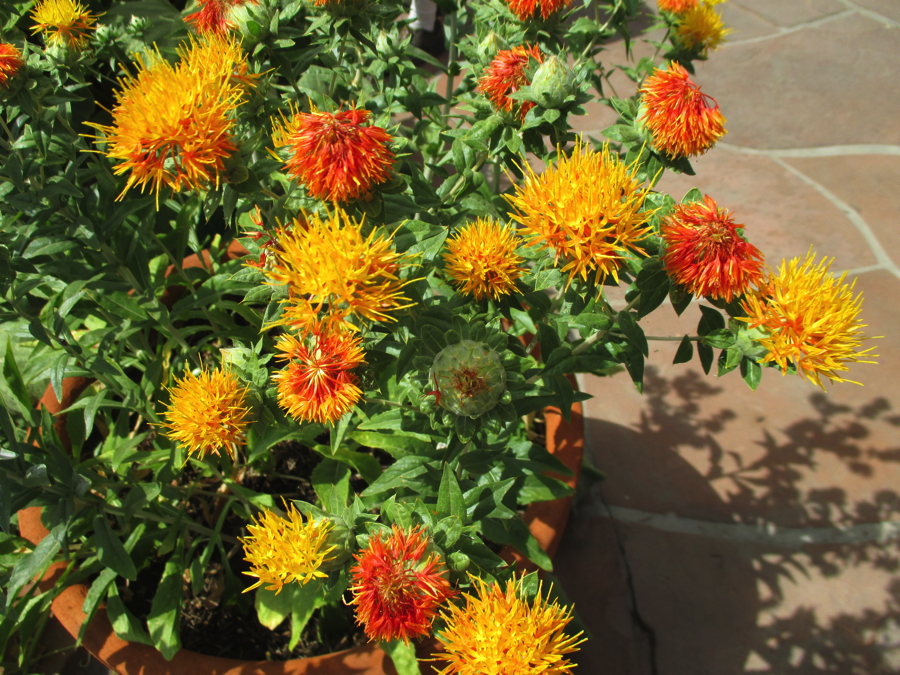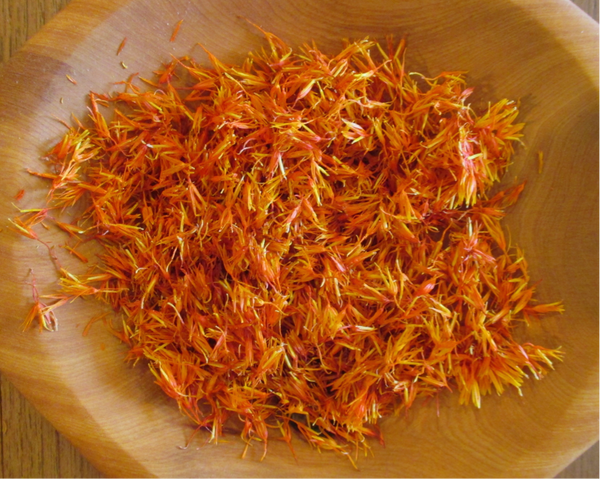
By Laura Jones, NS/S Distribution Manager
When I saw bright orange and yellow flowers gleaming from a pot outside our Retail Store, my eyes changed their focus to meet, for the first time, Corrales Azafrán. I was inspired to get to know this plant that colors our shop’s outdoor landscape, and in this blog post I’ll share a bit more about its history and general uses.
More commonly known as safflower (Carthamus tinctorius), its flowers were historically used for making dyes – it is said to have been the dye used for the red cotton tapes of legal documents, the source of the expression “Red Tape.” Corrales Azafrán is also an inexpensive though not true substitute for saffron, imparting a pale golden stain and a subtle flavor to dishes. It is beautiful in dry or fresh floral arrangements, and birds love the seeds. Nowadays it is mainly cultivated for the cooking oil extracted from its seeds.

The plant itself is thistle-like (it’s in the same botanical family as many thistles, Asteraceae) and produces 1 to 3-foot tall branched stalks. Each branch bears several flower heads that are 1 to 1-1/2” across. Prickly bracts surround a tuft of many tiny yellow, orange, or red florets. Each flower head produces about 15-20 white seeds that look a lot like small sunflower seeds.

Corrales Azafrán is a relatively easy to grow annual that is well adapted to desert gardens. It does well in full sun; it needs good drainage, but is drought resistant. Sow seeds directly outdoors in early to mid-spring, or with the monsoon rains. Cover with ¼" soil and then thin the seedlings to 6-8" apart. The plants grow quickly and will bloom about 3 months after planting. The azafrán growing outside our Retail Store in Tucson was planted in mid-March and the flowers had bloomed by mid-June. To harvest for cooking, wait another week until the flowers have dried, then gently gather them from the flower head and allow the seeds to continue to mature if desired. Unlike true saffron, which comes from the bright orange stigmas of the crocus flower, here you’ll be harvesting and using the whole floret.
The below recipe is shared from Lois Ellen Frank's beautiful book, Foods of the Southwest Indian Nations, available via our online shop and at our Retail Store at 3061 N. Campbell Ave, Tucson AZ 85719.

